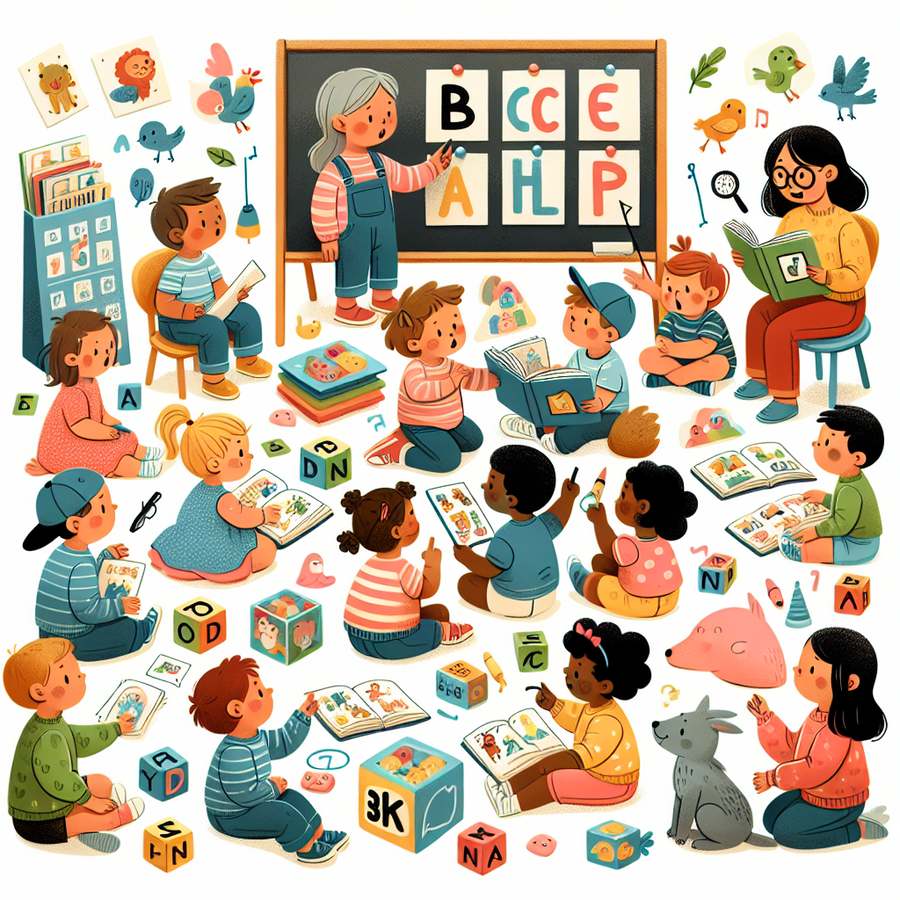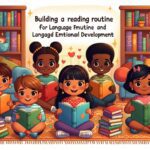Early language acquisition activities are not just educational tasks; they are magical keys that unlock the world of words for our little ones. As a parent, I’ve journeyed through the fascinating process of language development, witnessing first-hand how simple, playful interactions can significantly impact my child’s ability to communicate. Today, I want to share that journey with you, exploring activities that are not just beneficial but also bond-strengthening and joy-filled.
What are early language acquisition activities?
Early language acquisition activities refer to any interaction or exercise that encourages the development of language skills in young children. From the babbling phase to forming complete sentences, these activities play a pivotal role in helping children grasp the complexities of language. The beauty of these activities lies in their simplicity and the fact that they can be integrated into daily routines without much effort.
One of the first activities I introduced to my baby was reading aloud. Studies have shown that reading to your child from infancy can significantly enhance vocabulary and language skills. But more than that, it became a cherished bonding time for us, filled with expressive faces, animated voices, and eventually, my child’s attempts to mimic the sounds.
How do early language acquisition activities benefit my child?
The benefits of early language acquisition activities extend far beyond just learning new words. They foster cognitive development, enhance listening skills, and contribute to social and emotional growth. By engaging in conversations, playing word games, or even through the simple act of naming objects around the house, you are laying a foundation for effective communication skills, critical thinking, and empathy.
My journey with my child taught me that these activities also serve as an early indicator of language development progress. It was through our daily reading sessions that I first noticed my child’s growing vocabulary and their ability to follow along with stories. Such milestones are not just moments of parental pride but essential markers that can guide further language enrichment strategies.
What are some effective early language acquisition activities?
Now, let’s dive into some activities that I found to be incredibly effective in nurturing language development in my child. Remember, the key is consistency and making learning as interactive and enjoyable as possible.
1. Interactive reading: Choose books with large, colorful pictures and encourage your child to point at and name objects. Selecting age-appropriate baby books is crucial in this venture. It’s not just about reading the words on the page but engaging your child in a conversation about the story.
2. Sing-alongs and nursery rhymes: Music is a universal language and a fantastic tool for language acquisition. The repetitive nature of nursery rhymes and children’s songs promotes memory and word recognition. Incorporating music into your baby’s daily routine can have immense cognitive benefits.
3. Label everything: One of my favorite activities was to label objects around the house. This not only helped my child learn the names of everyday items but also encouraged curiosity and exploration.
4. Use baby sign language: Before babies can verbally communicate, they can understand and use signs. Teaching your baby basic sign language can be a fun way to foster early communication skills and reduce frustration.
5. Play-based learning: Incorporate language into play. Describe actions while playing, ask questions, and introduce new vocabulary in the context of play. This not only makes learning seamless but also enhances the child’s ability to associate words with actions or objects.
6. Engage in storytelling: Create stories together, with your child contributing parts of the narrative. This encourages imagination, sequencing skills, and a deeper understanding of language structure.
Embracing these activities has not just accelerated my child’s language development but has also provided us with countless moments of laughter, learning, and love. It’s these moments that remind me of the power of language and the importance of nurturing it from an early age.
How can I incorporate early language acquisition activities into our daily routine?
Incorporating early language acquisition activities into your daily routine can be simpler than you think. It’s about being intentional with your interactions and making the most of the moments you already share with your child.
For instance, meal times can be an opportunity to name and talk about foods, their colors, and textures. Bath time can be made educational by singing songs and naming body parts. Even a walk in the park can be transformed into a language-rich adventure, with discussions about nature, animals, and the surrounding environment.
Remember, the goal is not to add more to your already busy schedule but to enrich the moments you already have. By doing so, you’re not just teaching your child language; you’re showing them the joy of learning and the beauty of communication.
Conclusion
Early language acquisition activities are a beautiful blend of education and bonding. They open up a world of communication for our children, allowing them to express their thoughts, desires, and feelings. From personal experience, I’ve learned that these activities are not just about preparing our children for future academic success; they’re about laying the foundation for meaningful connections, creativity, and a lifelong love of learning.
As we embark on this journey together, let’s remember to cherish every giggle, every word, and every moment of discovery. For in these moments, we’re not just teaching language; we’re nurturing souls.













